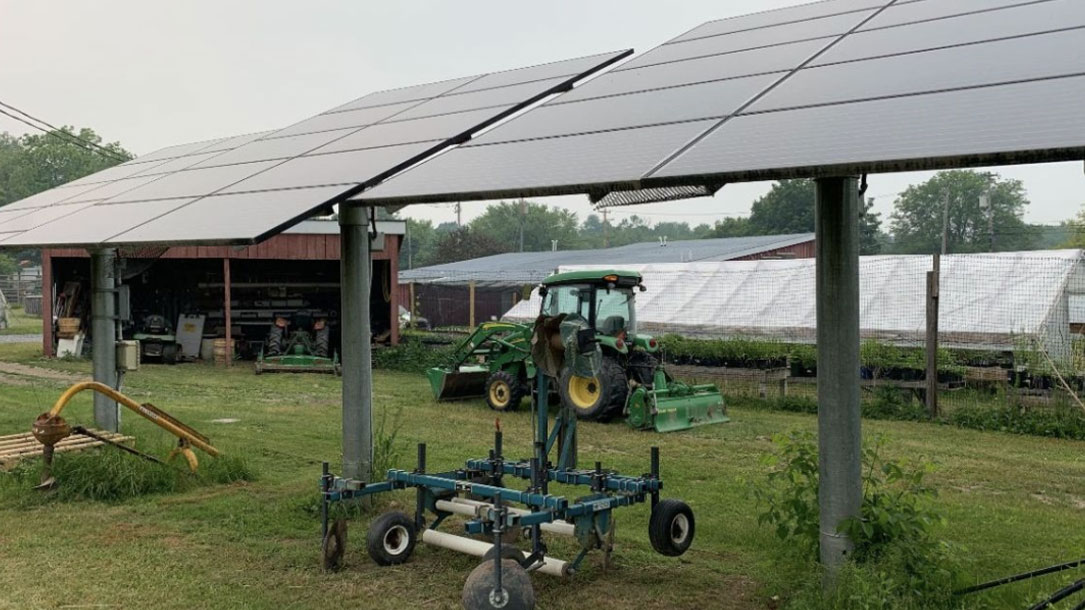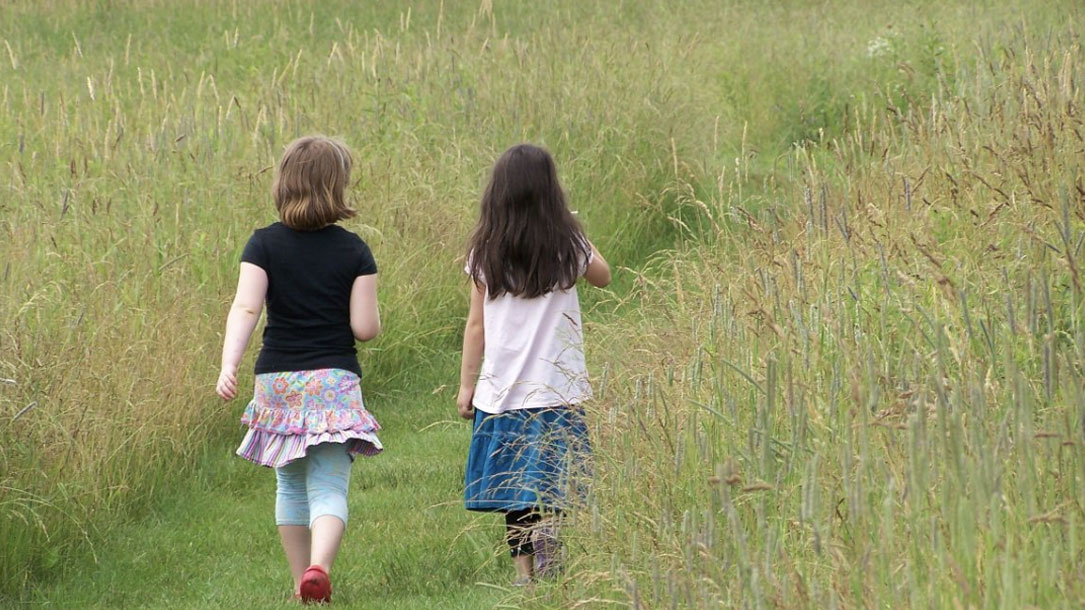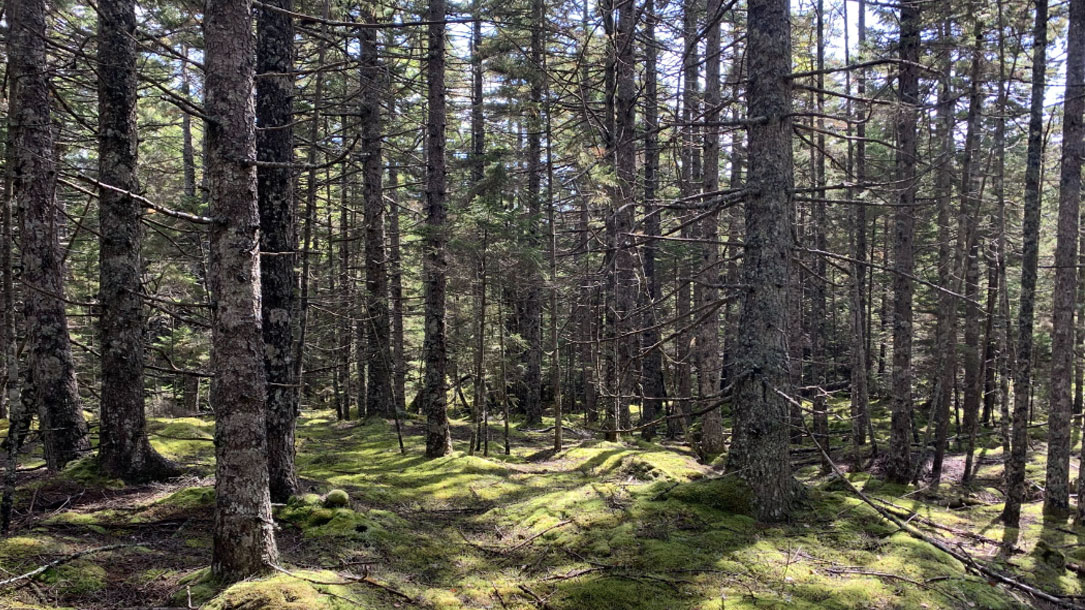Home > Climate News >

American Farmland Trust applauds introduction of bipartisan bill to advance agrivoltaics
Agrivoltaics refers to the practices of integrating solar energy generation and farming on the same piece of land, which could potentially reduce displacement of agricultural production from farmland as a result of solar development. The concept has been gaining attention in land-constrained countries like Japan and Germany as well as in states like Massachusetts and New Jersey.
“If included in the Farm Bill,” Fink said, “the Agrivoltaics Research and Demonstration Act would secure USDA’s role in advancing this innovation alongside the Department of Energy, AFT, and other partners across the country. Together, we are seeking ways to reduce displacement of farming from productive land as a result of solar energy development.”

Carbon farming
Agriculture is part of the climate solution. Grasslands are one of the largest carbon sinks on the planet, capable of pulling enormous quantities of CO2 from the atmosphere and storing it in the soil.
Carbon farming is the process of farming and ranching to maximize the land’s ability to lock up CO2 and other greenhouse gases, making the land more resilient to the effects of a changing climate.
Marin Agricultural Land Trust (MALT) partners with MALT farmers and ranchers to implement carbon farming practices, benefiting farmers, their land, and the climate…

Land trusts ink deal to conserve 20 acres along Mill River in Williamsburg
Mark Wamsely, [Kestrel Land Trust’s] conservation director, highlighted the conservation as a way to combat climate change. The [press] release also notes the state’s 2022 Climate Change Assessment, which states that risk of flooding and erosion in the hilltowns is likely over the coming century.
“It’s important that we address climate change in a thoughtful way and don’t accidentally harm the very natural resources that are under threat,” said Wamsley, adding that, “Conserving forests is one way the Hilltowns can make a critical contribution to combating climate change.”

Climate change website pages
Land trusts often wonder how they can increase their efforts to connect with people around climate change, meet them where they are, and inspire local, regional, and national action.
Many land trusts start with nature-based climate solutions as a way to connect. However, it’s important for people to also understand what they can do as individuals based upon their interests and capacity, in addition to what the land trust is doing.
If you are interested in enhancing climate messaging or raising the profile of your local land trust, you might find the Coastal Prairie Conservancy’s climate pages of interest.

Mississippi Valley Conservancy planting trees to help combat climate change
Carol Abrahamzon, Executive Director of the Mississippi Valley Conservancy, met with the local TV station to talk briefly about a restoration project they are working on.
“Abrahamzon says these trees are essential to providing a healthy habitat to the Coulee Region. The trees to be planted at the Conservancy’s Trempealeau Lakes nature preserve include swamp white oak, silver maple, and river birch.
Abrahamzon says that the selected tree species are native to the Driftless Area and will adapt well to this site and require little care after they become established. All of these benefits strengthen the land’s resilience to a changing climate…”

Can agriculture and solar co-exist?
As New York faces a future that includes wetter winters, and periods of more frequent droughts during the summer, farming continues to be a challenging livelihood. For many farmers looking to retire, as well as new or younger farmers, the economics of agriculture is increasingly a focal point as they plan their future. According to American Farmland Trust’s Farms Under Threat report, New York lost over a quarter million acres of farmland in sixteen years (2000 – 2016).
The loss of NY’s farmland is concerning. But imagine if farmers had an income stream that helped cover rough years caused by drought, flooding, and erratic weather. That’s part of a shift underway to rethink solar development that works for farmers and farming, rather than taking land out of production.
While I think we can all agree that no one wants to see solar panels on good farmland if it takes that farmland out of production, Farmer First Solar changes that paradigm and prioritizes designs that allow for greater farming options, increased farm viability, and soil health…

Climate change is here. Nature-based solutions can help.
Openlands works across the Chicago metropolitan region to advance nature-based solutions to climate change, improve the health and well-being of communities, and create a more verdant region for all.
Learn more about [their] work and how you can get involved to help make a more sustainable, equitable region with Openlands…

Exploring carbon sequestration
“[They] are following the model from other land trusts. There is a cost for land trusts to manage forests for increased carbon sequestration. [They] aren’t a commercial forestry operation and need revenue in order to manage forests.
Carbon offsets and the carbon market can provide resources for land trusts to restore large commercial forest landscapes, and support the ongoing cost of stewardship and restoration that a land trust is responsible for.
Whatcom Land Trust would only take on a carbon sequestration project that supports our mission, improves the forest ecosystem, and sequesters more carbon than it would otherwise…”

National Land Trust Conference: September 6 – 9, 2023
Rally is where over 1,500 people who share your passion for conservation will re-energize and inspire you.
Join the Land Trust Alliance in Portland in September for a gathering packed with diverse topics to explore and great colleagues and friends to learn from and share with. Rally has all of the resources you want to take your conservation skills further. There’s no better way to invest in your future.

Douglas County sheep farm working to restore soil and build community, agrivoltaics
“Co-locating farming and clean energy production on agricultural land creates rural economic resiliency, provides land access for new and underserved farmers, and builds vital agricultural infrastructure. Unlocking these bottlenecks will create food security that allows small farmers to compete in a global extractive market while focusing on restorative farming practices that heal the land”…












